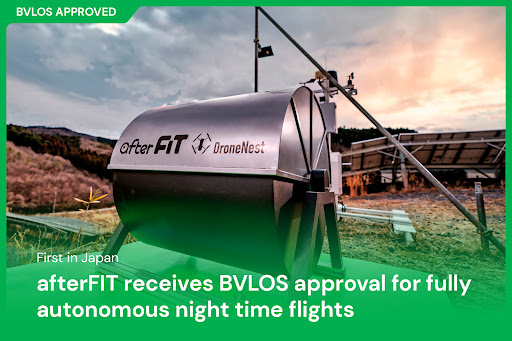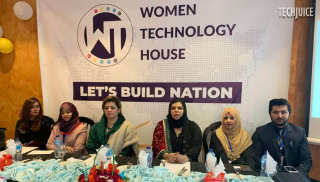FlytBase, an enterprise drone autonomy platform company, is proud to announce that its partner, afterFIT, a Japanese renewable energy firm, has received approval to fly autonomous drones Beyond Visual Line-of-Sight (BVLOS) at night, a first in Japan. The approval has been granted by the Japanese Ministry of Land, Infrastructure, Transport and Tourism.
afterFIT has been conducting BVLOS inspections at their power plant (1,924KW) in Tochigi Prefecture from their Tokyo headquarters, which is approximately 200 kilometers away, using a modular system that includes DJI drones, low-cost docking station, and FlytNow Auto (a software product of FlytBase). The use of drones has enabled them to reduce the time it takes to inspect a MW from three hours to less than ten minutes.
How are autonomous drones assisting afterFIT?
The following are the primary applications:
- Inspection: afterFIT configures the drone to fly autonomously along a predetermined route scheduled on FlytNow, inspect solar panels, and live stream infrared video feed and images back to the command center. Each inspection round takes about 20 minutes. Following data collection, the AI system generates power plant anomaly reports.
afterFIT has also been able to increase flight frequency by using drone docking stations. Solar power plants were previously only inspected once a year; however, autonomous drones have allowed for more frequent inspections and early detection of damage.
- Security: AfterFIT intends to use autonomous drones for security purposes as well. When necessary, the drone will fly to a suspected anomaly and notify management as well as any potential intruder. It intends to strengthen the security of the premises with the approval of night-time BVLOS.
Apart from automating routine solar panel inspections, afterFIT has been using autonomous drones to solve three major problems specific to their region:
- Reduce copper wire thefts:To achieve carbon neutrality by 2050, the Japanese government has proposed doubling the number of solar farms. On the other hand, as the price of copper wire rises, so does the number of copper wire thefts. This raises the cost of replacements and reduces the capacity of electricity generation to account for repair time, resulting in lower returns on solar farms.
- Reduce workforce involvement: To compensate for Japan’s aging population, which has resulted in a significant shortage of skilled personnel, labor-saving measures are required and autonomous drones are a perfect-fit.
- Reduce required capital: afterFIT also needs to invest heavily in round-trip transportation of staff members to and from the site & ensure that two technicians are available within two hours of a potential mishap. The use of autonomous drones has allowed them to reduce costs.
To know more on how afterFIT is benefitting from autonomous drones, please read the following case study: https://flytnow.com/solar-farm-inspections/
“We are absolutely delighted with afterFIT’s latest BVLOS accomplishment. This would serve as a model for the renewable energy industry, providing much-needed encouragement to conduct BVLOS operations in Japan and around the world” Nitin Gupta, Founder & CEO of FlytBase, stated. “The FlytBase team is excited to continue collaborating with afterFIT as it expands its autonomous drone operations to improve the efficiency, security, and inspection process of its power plants.”
About FlytBase
Founded in 2016, FlytBase, Inc., a Silicon Valley company, has built the world’s first Internet of Drones (IoD) platform, providing drone-agnostic software solutions to automate and scale drone operations. FlytBase was a part of Cisco’s accelerator program and was recognised as the Grand Champion at the NTT Data’s Global Innovation Contest. Their flagship product, FlytNow, is a web-based software for automation of routine missions using drone docks. It supports the widest range of docking-stations and drones (DiaB) for various commercial applications.
About afterFIT:
afterFIT is an electric power company specializing in green electricity generation, transmission, and sale. Since inception, they have been on the mission to accelerate the shift to renewable energy. Although increasing the number of renewable energy power plants is difficult due to the land constraints, afterFIT has been scouring Japan’s landscape using satellite data, automated drones, and AI tech to find the most viable locations for renewable energy production.












